Wooden cutting boards may develop warping, darkening, or cracks over time. As a natural, organic product, proper daily care is essential to keep your cutting board in excellent condition, allowing it to last for many years.
Before first use
Most Manaita cutting boards are shipped with the natural wood grain uncoated unless otherwise requested. The types of wood typically used for the quality Manaita boards have good water drainage, and as long as you dry them properly after each use, they should remain in good condition.
Water damage and darkening may occur at the end grain, which is the weakest spot on a Manaita cutting board. End grain sections are more susceptible to water damage due to the presence of pores that act as vessels within the trunk of a living tree transporting particularly water and nutrients from the roots to the leaves.
When you place your Manaita flat on the kitchen counter, the right and left ends are the end grain. Applying beeswax to the end grain can help reduce water absorption, preventing both damage and mold growth. You can periodically apply beeswax to the end grain, that will help maintain the wood's integrity.
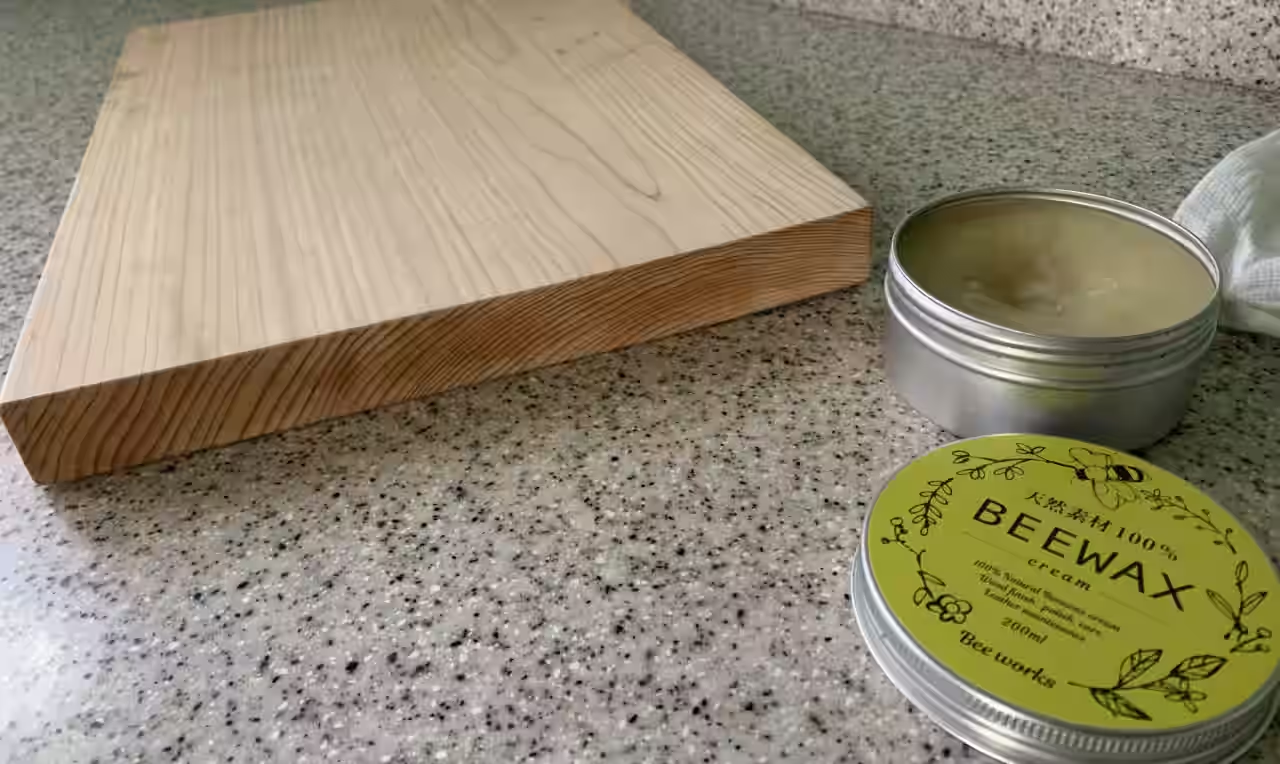
Before each use
Prior to each use, wet both sides of the cutting board with cold water in the sink, allowing it to absorb the moisture. This step is especially important before cutting meat or strongly aromatic ingredients like onions and garlic. Coating the board with water makes it harder for ingredients to adhere and helps prevent odors from permeating the wood.
After each use
Immediately after each use, wash the board thoroughly with cold water. Avoid using warm water, as it can cause protein-based stains to coagulate, making them more difficult to remove.
When handling raw meat, poultry, or fish, use dish soap and scrub the board with a brush along the grain of the wood. Avoid excessive use of dish soap, as it may strip away the wood's natural oils. For less strongly scented or oily ingredients, rinsing with cold water alone may suffice.
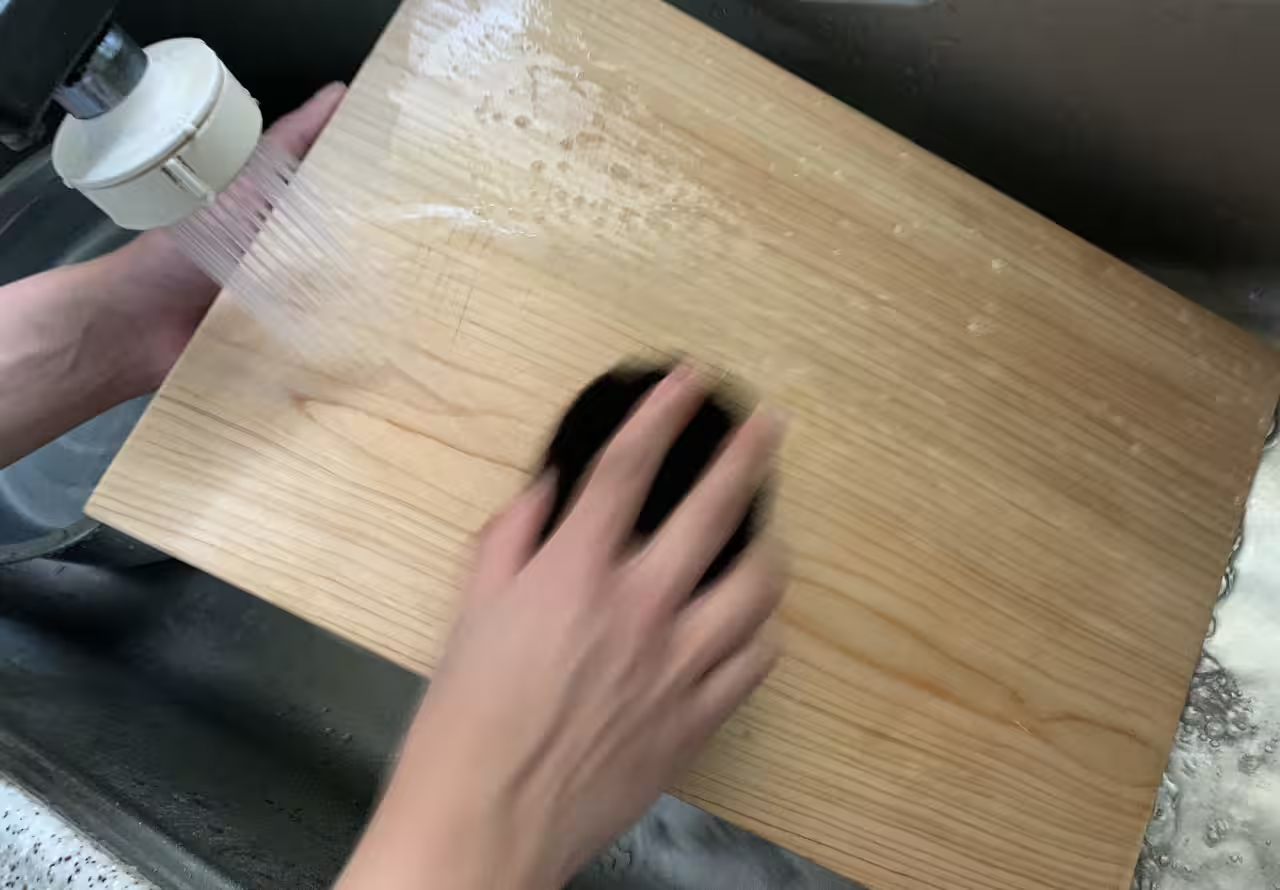
After washing, use a clean, dry cloth to wipe the board and place it on a cutting board stand, allowing it to air dry naturally.
Avoid using a dishwasher for cleaning and drying, as the high heat and harsh detergents can damage the board. Also, refrain from exposing the board to direct sunlight, as it can cause cracking and warping due to rapid temperature changes and uneven drying.
In case of persistent odors or discoloring
Try washing the board vigorously with coarse salt (or baking soda or vinegar), then rinse it off with cold water. If you don't have coarse salt, it's acceptable to pour boiling water over the cutting board placed in the sink for sterilization and disinfection.
How to Prevent Discoloration
The primary cause of discoloration in cutting boards is prolonged dampness, which creates an environment for mold growth. To prevent this, ensure the cutting board is thoroughly dried after each use. Proper drying takes at least 24 hours, so it's best to have two cutting boards and alternate their use. This allows each board sufficient time to dry completely, reducing the risk of discoloration and mold growth.
